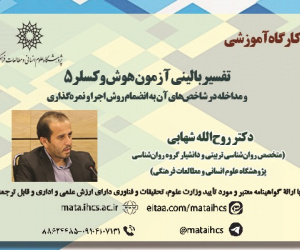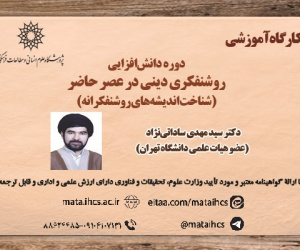بررسی اثر تصمیم گیری جمعی در افزایش عدالت اجتماعی با استفاده از مدلسازی معادلات ساختاری (مقاله علمی وزارت علوم)
درجه علمی: نشریه علمی (وزارت علوم)
آرشیو
چکیده
هدف این مقاله شناسایی شاخص های عقلانیت مشترک (به عنوان مبنایی برای تصمیم گیری مشترک)، تصمیم گیری جمعی و عدالت اجتماعی و سنجش نوع و میزان رابطه بین آنهاست. برای دستیابی به اهداف ابتدا یک مدل مفهومی با استفاده از پیشینه تحقیق و مصاحبه با خبرگان طراحی شده است. سپس روابط بین سنجه ها و سازه های این مدل به وسیله توزیع پرسش نامه در جامعه هدف بررسی شد. جامعه هدف، مدیران سازمان های دولتی (در سطوح مدیریتی مختلف) هستند که از موضوع تصمیم گیری جمعی آگاهی داشتند و یا تجربه استفاده از آن را داشتند. در مدل مفهومی عقلانیت مشترک شامل چهار شاخص (تفکرات مشترک، اهداف مشترک، منافع مشترک و علایق مشترک)، تصمیم گیری جمعی شامل چهار شاخص (رأی گیری، اشتراک اطلاعات، مشورت و تیم سازی) و عدالت اجتماعی شامل چهار شاخص (کاهش تبعیض، کاهش فساد، توزیع قدرت و کاهش تعارض منافع) است. برای دستیابی به اهداف تحقیق از روش معادلات ساختاری و برای تجزیه وتحلیل داده ها از نرم افزار Smart PLS 2.0 استفاده شده است. برای بررسی برازش مدل کلی، از معیار نیکویی برازش (GOF) استفاده شده است که 0.516 به دست می آید و این معیار نشان می دهد برازش کلی مدل پژوهش مناسب است. نتایج نشان می دهد عقلانیت مشترک از طریق متغیر میانجی تصمیم گیری جمعی بر عدالت اجتماعی جمع تأثیر می گذارد. یعنی اگر مدیران بخواهند از عقلانیت مشترک ایجاد شده برای افزایش عدالت استفاده کنند، نباید تصمیم گیری جمعی را نادیده بگیرند. این مقاله می تواند به حکمرانان و مدیران انگیزه دهد که بدون صرف هزینه های زیاد، برای افزایش عدالت اجتماعی از روش تصمیم گیری جمعی در امور مختلف استفاده کنند.Investigating the effect of collective decision-making in increasing social justice using structural equation modeling
This article aims to identify the indicators of common rationality (as a basis for joint decision-making), collective decision-making, and social justice and measure the type and extent of the relationship between them. A conceptual model is designed to achieve the aims using the research background and interviews with experts. Then, the relationships between the measures and constructs of this model were investigated by distributing the questionnaire to the target population. The target community is the managers of government organizations who are aware of collective decision-making or have experience. In the conceptual model common rationality includes four indicators (common thoughts, common goals, common benefits, and common interests), collective decision-making consists of four indicators (voting, information sharing, meeting, and consultation) and social justice includes four indicators (reducing discrimination, reducing corruption, power distribution, and reducing conflict of interest). The structural equation method is used to achieve the research objectives and Smart PLS 2.0 software is used to analyze the data. To evaluate the overall model fit, the goodness of fit (GOF) is used, which is obtained as 0.516, and this criterion indicates that the overall model fit of the research model is appropriate. The results show that common rationality affects social justice through the mediating variable of collective decision-making. Managers should not ignore collective decision-making if they want to use the common rationality created to increase justice. This study can motivate rulers and managers to use the collective decision-making method in various matters to increase social justice without spending a lot of money.







